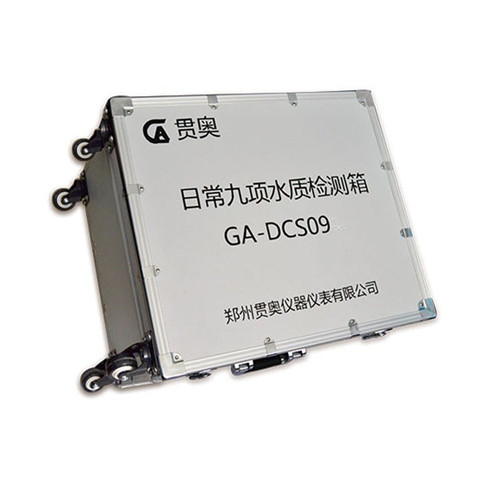At present, there are two main methods to detect the residual chlorine in water: o-toluidine colorimetry and DPD residual chlorine colorimetry. Now, DPD residual chlorine detection method is basically used in various types of water plants, industrial and chemical enterprises, large swimming pools and other places. Especially in recent years, the photoelectric colorimetric detection principle has become increasingly mature, and has gradually replaced the traditional visual colorimetric method. Its advantages of simple operation, fast and accurate can let the water quality inspection personnel know whether the residual chlorine and total chlorine in the water meet the specified water quality standards. Today, let's talk about the method of rapid determination of residual chlorine by water quality detector.

DPD residual chlorine determination principle
When the measured water sample is put into the DPD free residual chlorine powder, the water sample will turn red. Put the water sample into the photoelectric colorimetric base, and the water quality detection instrument will compare the redness to obtain the concentration of residual chlorine.Preparation for residual chlorine detection
Take out the portable residual chlorine water quality detector and the equivalent DPD free residual chlorine powder reagent used in the test,Operation method of residual chlorine water quality detector
The residual chlorine detection instrument should be zeroed, accurately measure the sample to be measured to the scribe line (10ml) of the cuvette, tighten the positioner, put the cuvette in the tank, and cover the instrument cap carefully, press "On/Off" key to turn on the instrument, press "Zero" key, "0.00" appears (blank zero adjustment completed).Then add DPD free residual chlorine powder to the cuvette, close the cap, shake it gently, develop the color for 3 minutes, close the instrument cap, press the "concentration" or "confirm" button, and measure the free residual of the water sample. Chlorine value.
Precautions for rapid detection of residual chlorine
1. After adding the DPD reagent, the inspector must shake it fully after closing the rubber stopper to dissolve the reagent.2. The surface of the cuvette must be cleaned before inserting it into the detection tank.
3. When the cuvette is inserted into the detection tank, it must be still for 30s, so that the air bubbles in the sample are removed and the solid particles settle before the measurement can be performed.
4. The cuvette must be locked when inserted into the detection slot to position the cuvette and prevent stray light from entering.
5. To ensure the accuracy of residual chlorine measurement, the same colorimetric bottle should be used for zero adjustment and measurement samples.
6. The cuvette and rubber stopper must be cleaned immediately after the measurement to prevent contamination and corrosion of the cuvette.
7. If the solid or solution enters the cuvette tank, it must be cleaned before putting it into the cuvette.
8. When the "Concentration" or "OK" button is pressed continuously, if the reading increases or the reading is unstable, it indicates that the battery voltage is insufficient, and the battery should be replaced and re-measured.



